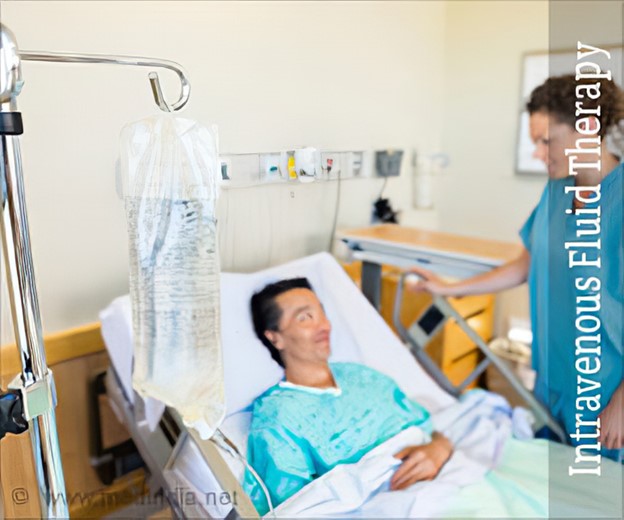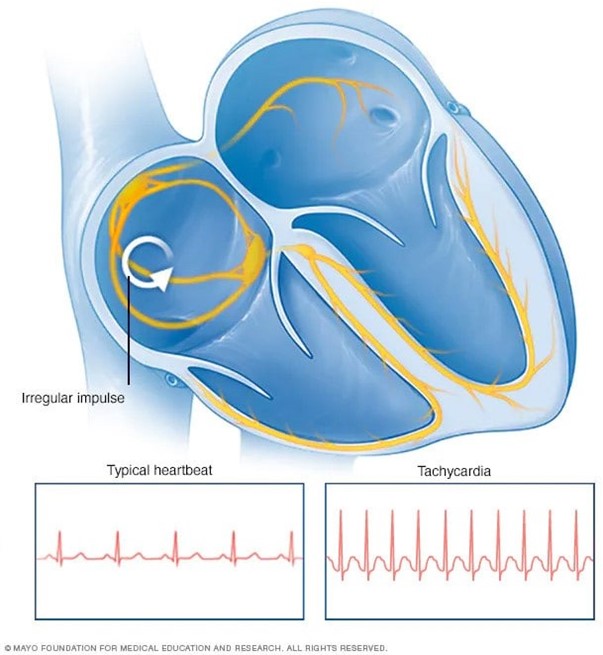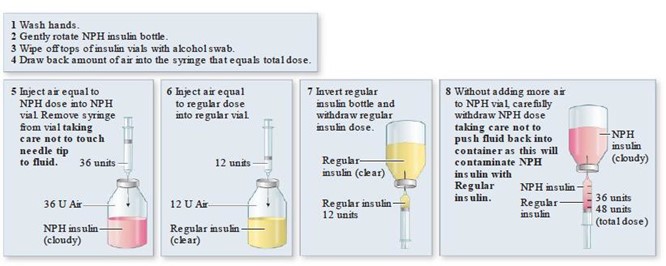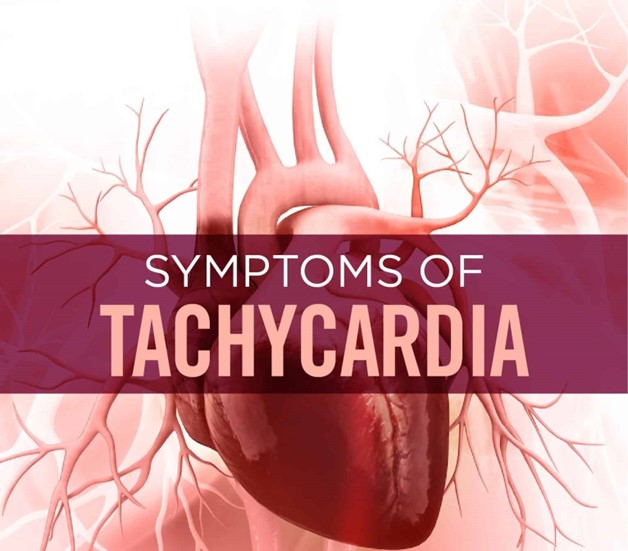Pharmacology Endocrine and Hematology
ATI Pharmacology Endocrine and Hematology
Total Questions : 45
Showing 10 questions Sign up for moreA nurse is assisting with the care of a client who has a prescription for 3,000 mL of intravenous fluids over the next 24 hours.
The nurse should set the volumetric pump to deliver how many milliliters per hour?
Explanation
To calculate the rate at which the volumetric pump should be set to deliver the intravenous fluids, you need to divide the total volume of fluid (3,000 mL) by the total time in hours (24 hours).
This gives you 3,000 mL ÷ 24 hours = 125 mL/hr.
Therefore, the nurse should set the volumetric pump to deliver 125 mL of fluid per hour.

Choice B is incorrect because 130 mL/hr would result in a total of 3,120 mL over 24 hours.
Choice C is incorrect because 135 mL/hr would result in a total of 3,240 mL over 24 hours.
Choice D is incorrect because 140 mL/hr would result in a total of 3,360 mL over 24 hours.
A nurse is preparing to administer cefixime to a patient. The dose is 200 mg PO.
Available is cefixime oral suspension 100 mg/mL.
How many milliliters should the nurse administer?
Use a leading zero if it applies. Do not use a trailing zero.
Explanation
To calculate the volume of cefixime oral suspension that the nurse should administer, you need to divide the prescribed dose (200 mg) by the concentration of the suspension (100 mg/mL).
This gives you 200 mg ÷ 100 mg/mL = 2 mL.
Therefore, the nurse should administer 2 mL of cefixime oral suspension.
Choice A is incorrect because 1.9 mL would provide a dose of 190 mg.
Choice C is incorrect because 2.1 mL would provide a dose of 210 mg.
Choice D is incorrect because 2.2 mL would provide a dose of 220 mg.
A nurse is reinforcing teaching with a patient who has hypertension and a new prescription for verapamil.
The nurse should instruct the patient to avoid taking this medication with which of the following foods?
Explanation
The nurse should instruct the patient to avoid taking verapamil with grapefruit.
Studies have demonstrated an interaction between verapamil and grapefruit juice, which is likely due to an inhibition of intestinal metabolism resulting in increased oral bioavailability1.
This means that grapefruit can interfere with the enzymes that break down verapamil in your digestive system, potentially leading to dangerous health problems2.
Choices B, C, and D are incorrect because there is no known interaction between verapamil and spinach, broccoli, or carrots.
A nurse is caring for a client who is taking levothyroxine for hypothyroidism.
Which of the following indicates the client's dose is too high?
Explanation
Taking too much levothyroxine can cause side effects such as an elevated pulse1.

Choice A is not the answer because a decreased temperature is not a side effect of taking too much levothyroxine.
Choice B is not the answer because hypotension is not a side effect of taking too much levothyroxine.
Choice D is not the answer because constipation is not a side effect of taking too much levothyroxine.
A male client tells the nurse that he does not want the female assistive personnel (AP) involved in his care.
Which of the following statements should the nurse give?
Explanation
“I understand your request to have only male staff members attend to your care.” This response acknowledges the client’s request and shows that the nurse is willing to listen to his concerns.
Choice A is not the correct answer because it can be perceived as confrontational and may make the client feel uncomfortable.
Choice C is not the correct answer because it dismisses the client’s request and may make him feel unheard.
Choice D is not the correct answer because it implies that the nurse will immediately comply with the client’s request without further discussion or consideration of other options.
A nurse is reinforcing teaching with a client who is to self-administer regular insulin and NPH insulin from the same syringe.
Which of the following instructions should the nurse provide?
Explanation
“Inject air into the regular insulin first.” When mixing regular insulin and NPH insulin in the same syringe, the nurse should instruct the client to inject air into the NPH insulin vial first, then inject air into the regular insulin vial.
After that, the client should draw up the regular insulin into the syringe first, followed by the NPH insulin.
Choice B is not correct because NPH insulin should not be shaken vigorously as it can damage the insulin molecules.
Choice C is not correct because the regular insulin should be drawn up into the syringe first.
Choice D is not correct because regular insulin is a clear solution and should not appear cloudy.

A nurse is reviewing laboratory data from a client who has a pulmonary embolism and is receiving IV heparin.
Which of the following findings should the nurse report to the provider?
Explanation
“Patient’s platelets 100,000.” A nurse should report a low platelet count to the provider because it may indicate heparin-induced thrombocytopenia (HIT), a serious complication of heparin therapy.
Choice B is not correct because a Prothrombin time (PT) of 12 seconds is within the normal range and does not need to be reported.
Choice C is not correct because Thrombin time (TT) is not typically used to monitor heparin therapy.
Choice D is not correct because a Hematocrit of 35% is within the normal range and does not need to be reported.
A nurse is reinforcing discharge instructions for a client who has asthma and is about to start taking theophylline.
The nurse should instruct the client to monitor which of the following findings is an adverse effect of the medication.
Explanation
“Tachycardia.” Theophylline can cause a number of side effects, including tachycardia (fast heart rate) 1.
The nurse should instruct the client to monitor for this adverse effect and report it to their healthcare provider if it occurs.
Choice A is not correct because drowsiness is not a common side effect of theophylline.
Choice B is not correct because constipation is not a common side effect of theophylline.
Choice D is not correct because tachycardia is a known adverse effect of theophylline.

A nurse is preparing to administer heparin subcutaneously to a client.
Which of the following is an appropriate action by the nurse?
Explanation
“Inject the medication into the abdomen above the level of the iliac crest.” When administering heparin subcutaneously, it is appropriate to inject the medication into the abdomen above the level of the iliac crest 1.
Choice A is not correct because a 1-inch needle may be too long for subcutaneous injection.
A shorter needle, such as a 3/8 to 5/8 inch needle, is typically used for subcutaneous injections.
Choice B is not correct because a 22-gauge needle may be too large for subcutaneous injection.
A smaller gauge needle, such as a 25- or 27-gauge needle, is typically used for subcutaneous injections.
Choice C is not correct because massaging the injection site after administering heparin can increase the risk of bruising and should be avoided.
A nurse is reinforcing teaching for a client who has angina pectoris and a new prescription to apply a nitroglycerin transdermal patch daily.
Which of the following instructions should the nurse give the client?
Explanation
The nurse should instruct the client to cleanse the skin before applying a nitroglycerin transdermal patch 1.
This is because it is important to apply the patch to a clean, dry skin area with little or no hair that is free of scars, cuts, or irritation 1.

Choice A is incorrect because it is not recommended to use an old patch with medication residue.
Instead, always remove a previous patch before applying a new one 1.
Choice B is incorrect because a nitroglycerin patch should not be kept in place for 72 hours before replacing.
Instead, it should be worn for 12 to 14 hours and then removed 2.
Choice C is incorrect because the patch should not be applied to a hairy area of the skin for better adherence.
Instead, it should be applied to an area with little or no hair 1.
You just viewed 10 questions out of the 45 questions on the ATI Pharmacology Endocrine and Hematology Exam. Subscribe to our Premium Package to obtain access on all the questions and have unlimited access on all Exams. Subscribe Now



